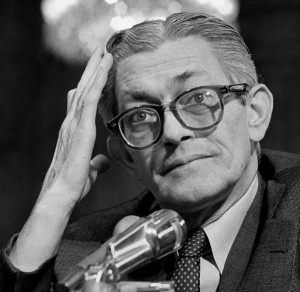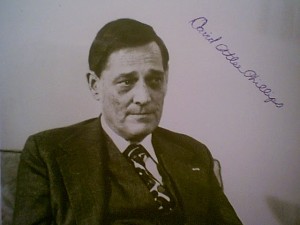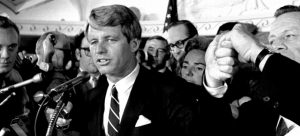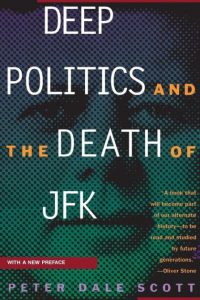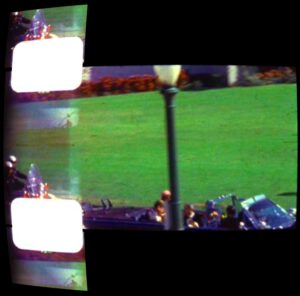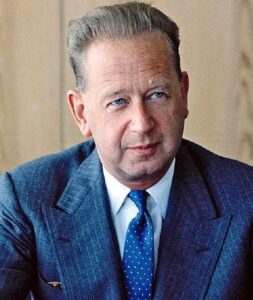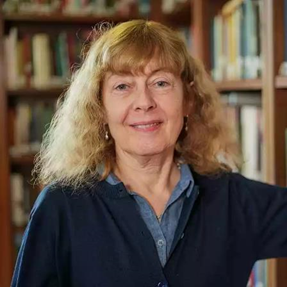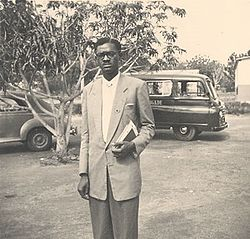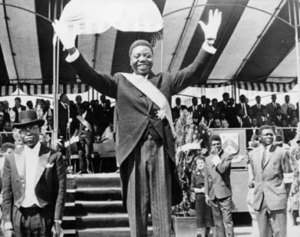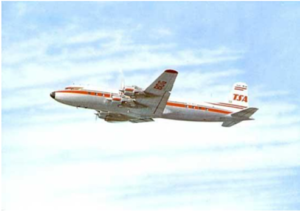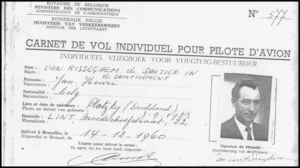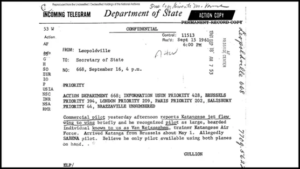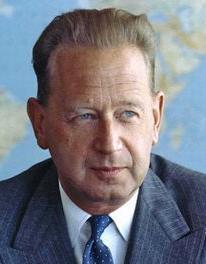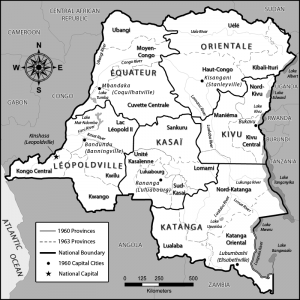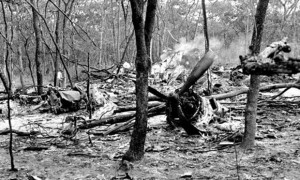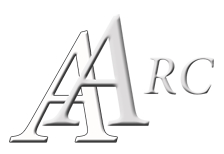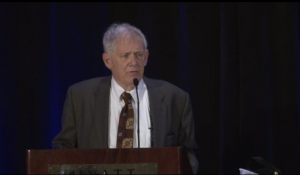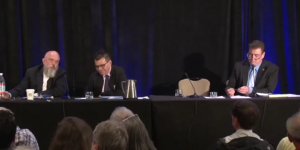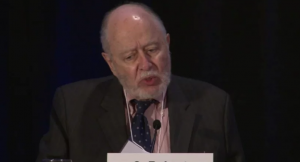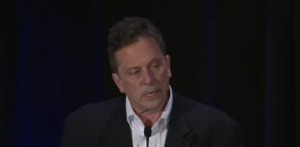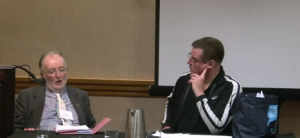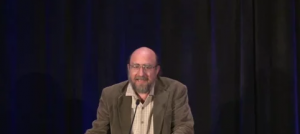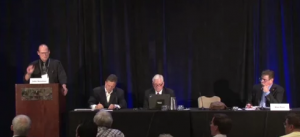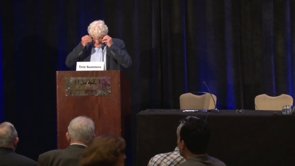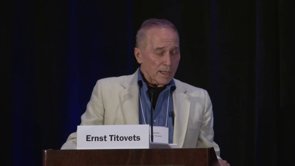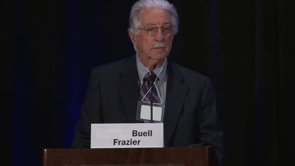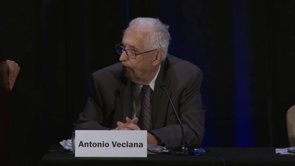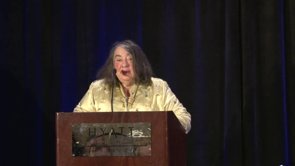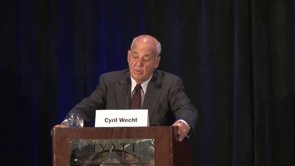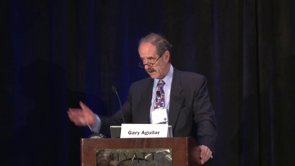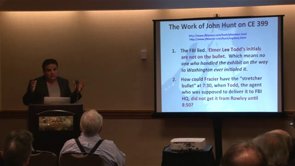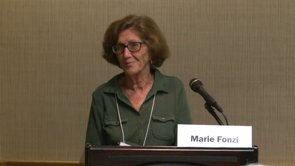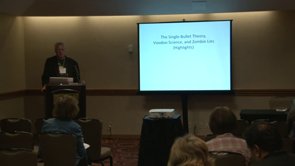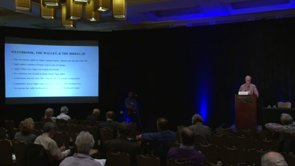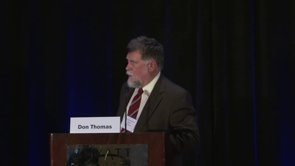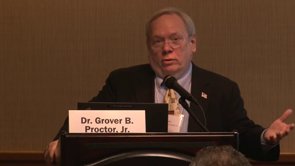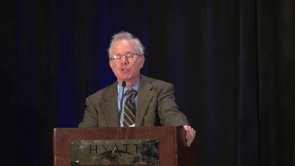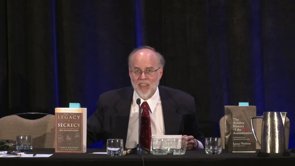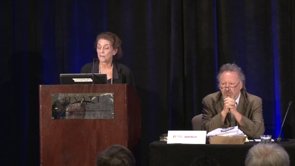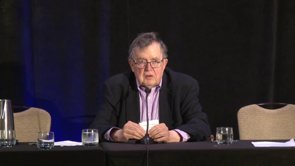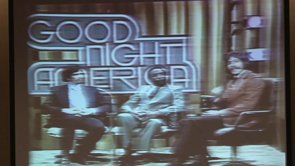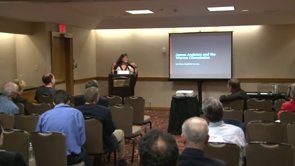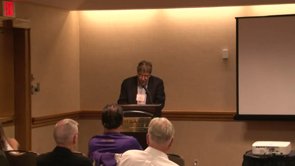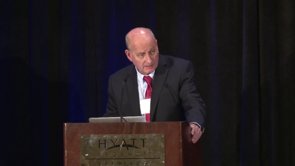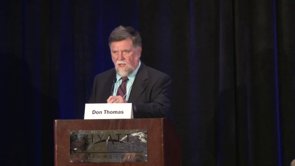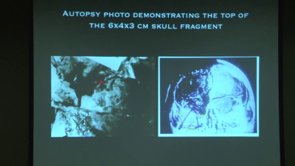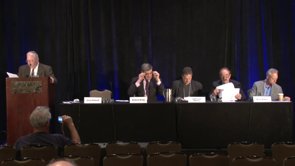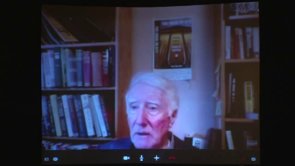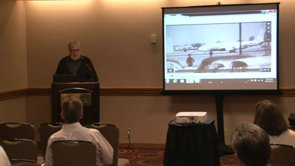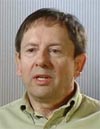Following is the first in a series of commentaries by distinguished authors, researchers, and historians associated with the AARC. We begin with AARC Board member, the esteemed Malcolm Blunt.
Shell Games
29 August, 2017 © 2017 – Malcolm Blunt
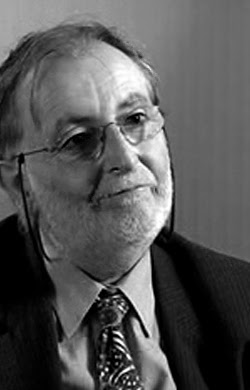 Both the Church Committee* and the House Select Committee on Assassinations gained access to the CIA Office of Security files of Lee Harvey Oswald. In 1993, despite a directive from CIA Director Robert Gates seeking an all-encompassing search of ALL CIA components for ANY material/records relevant to the assassination of President Kennedy, the Oswald OS files remained hidden. This huge search by CIA did not surface Oswald’s security files and the Assassination Records Review Board remained uninformed about their existence. Not until 1997 when an ARRB staffer stumbled across evidence that two previous congressional investigations had access to these files did CIA “discover” them. CIA told the ARRB that the reason the Oswald security files were not previously located was because those records were not at the Agency Archival Record Center in Alexandria, VA; they were in fact at CIA HQS in Langley within Office of Security Archival Holdings. How were they missed in the Gates search of 1993?
Both the Church Committee* and the House Select Committee on Assassinations gained access to the CIA Office of Security files of Lee Harvey Oswald. In 1993, despite a directive from CIA Director Robert Gates seeking an all-encompassing search of ALL CIA components for ANY material/records relevant to the assassination of President Kennedy, the Oswald OS files remained hidden. This huge search by CIA did not surface Oswald’s security files and the Assassination Records Review Board remained uninformed about their existence. Not until 1997 when an ARRB staffer stumbled across evidence that two previous congressional investigations had access to these files did CIA “discover” them. CIA told the ARRB that the reason the Oswald security files were not previously located was because those records were not at the Agency Archival Record Center in Alexandria, VA; they were in fact at CIA HQS in Langley within Office of Security Archival Holdings. How were they missed in the Gates search of 1993?

Right click and choose ‘view image’ to expand.
In 1998 CIA handed over LHO’s Security files to the ARRB. Upon delivery staffers there discovered that of the 7 volume set, one volume, Volume 5, was missing. Prior to sending over the files to the ARRB the CIA’s Historical Review Group, now “consolidated” (disbanded) and reformed as part of IMS (IMG) Information Management Services (Group), also spotted this curious anomaly and had sought to try and work out some sort of explanation for the disappearance. Internal HRG memos show that they first thought that there never was a volume 5, it was simply a case of miss-numbering by clerical staff. Another thought came to mind within CIA/HRG: perhaps the absence of Volume 5 of the Oswald security file might be explained by “consolidation” of those records. In other words, Volume 5 could have been consolidated within Volume 4 and/or Volume 6.

Right click and choose ‘view image’ to expand.
We can detect that some concern was generated within the Agency for obvious reasons; CIA might receive much criticism and subject itself to accusations of “foul play” with regard to the missing volume. CIA eventually decided to go with the following: “Volume 5 of Oswald’s Security file may never have existed.” — Clearly the Historical Review Group, which was responsible for the release of all JFK related CIA material, found itself in an acutely embarrassing predicament. It does seem that there was genuine puzzlement within the HRG about this as they struggled to find an explanation. Some partial explanation may reside in the files of Scott Breckinridge and the OLC (Office of Legal Counsel) who acted as liaison between CIA and the HSCA in the seventies. One Breckinridge note describes the OS volumes to which Betsy Wolf, the HSCA researcher tasked with reading Oswald’s security files, had access. In this typewritten note Scott Breckinridge specifically mentions Wolf’s access to Volume 5.
In fact, HSCA records indicate that she reviewed approximately half of the materials within Vol. 5.
So what are we to make of this? In response to official requests from the US Government and despite specific directives from CIA Directors Gates and Tenet, which were acted upon by HRG Chief John Pereira in 1993 and J. Barry Harrelson in 1997, the Oswald Security files seem to have been turned inside out and outside in. Volume 5 existed during the tenure of the HSCA as confirmed by the Chief Counsel of OLC, Scott Breckinridge and the handwritten notes of Betsy Wolf. Sometime between the HSCA closure in 1979 and the late surfacing of those files in 1997, one volume, Vol. 5 disappeared. This beggars the question; for what possible reason? The intact files were previously given to both the SSCIA and the HSCA, so why did the CIA “not find them” until a direct, specific request from the ARRB in 1997? And then, why turn them over minus volume 5? How were the files missed during the Gates search of 1993 and the Tenet search of 1997? The two DCI orders were to search ALL CIA components.
In 1977, while overseeing the process whereby CIA OGC (Office of General Counsel) received the Office of Security Oswald files, Russ Holmes documents in his inventory all 7 OS volumes on Lee Harvey Oswald. Seven volumes in — seven volumes out. As of that accounting, all volumes were present and nothing was missing.
MB
RELATED: Important CIA comments on HSCA draft reports: Scott Breckinridge (CIA OLC) to G. Robert Blakey DOWNLOAD
RELATED: 19 March, 1998: STATEMENT CONCERNING ACTIONS TAKEN BY THE CENTRAL INTELLIGENCE AGENCY PURSUANT TO THE REQUIREMENTS OF THE JFK ASSASSINATION RECORDS COLLECTION ACT OF 1992 DOWNLOAD
RELATED: OFFICE OF SECURITY DOCUMENTS PULLED FROM OS OSWALD FILES PRIOR TO REVIEW BY CHURCH COMMITTEE DOWNLOAD
RELATED: CIA and OPENNESS: Speech by Dr. Robert M. Gates, Director of Central Intelligence, Oklahoma Press Association, 21 February, 1992 DOWNLOAD
________________________________
* An eight-binder index of the Church Committee is still withheld in full. Access to that material may shed light on the issues addressed within this article.
Alan Dale’s conversations with Malcolm Blunt may be heard HERE and HERE.
Right click and choose ‘view image’ to expand images.







7 JULY 1998 ARRB GUNN TO HARRELSON RE CIA RECORDS SEARCH Pg 1

7 JULY 1998 ARRB GUNN TO HARRELSON RE CIA RECORDS SEARCH Pg 2
__________________________________________________________________________________________________
Our second in a series of commentaries by distinguished authors, researchers, and historians associated with the AARC:
A CIA Tutorial: How to Avoid Providing Files
13 SEPTEMBER, 2017 © 2017 – Bill Simpich
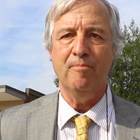 Civil Rights attorney and author of State Secret: Wiretapping in Mexico City, Double Agents, and the Framing of Lee Oswald, Bill Simpich
Civil Rights attorney and author of State Secret: Wiretapping in Mexico City, Double Agents, and the Framing of Lee Oswald, Bill Simpich
With the October releases coming up, we should keep in mind what the ARRB has already told us we will not find.
For those of us who research the Mexico City story, it has always been very frustrating to find that there is no organized way to find the cables and dispatches between Mexico City and Headquarters, or between these two entities and JMWAVE in Miami, except within carefully circumscribed dates.
What we have run into amounts to a CIA tutorial on how to avoid providing information that is mandated under the law.
_____________________________________________________________________________________________________
Commentary and Analysis by AARC Board member Malcolm Blunt.
Staying informed: 2013, CIA closes office that declassifies historical materials
2 October, 2017 © 2017 – Malcolm Blunt
 The CIA Historical Collections Division (HRP) for all of it’s faults was by the agency’s standards a beacon of light as far as declassification is concerned. In 2011 I was fortunate to meet CIA Review Program staffers at NARA, College Park, MD, and at the Museum of History in Raleigh, North Carolina. At these venues they were presenting packages of historical documents and one was able ask them questions one on one. Of course, I was concerned about the 2017 releases and Miss L., a senior HRP officer, told me point blank that CIA was going to appeal to the president on many documents, adding and emphasizing, “in my opinion, some of that stuff should never be released.” Miss L. felt strongly that out of all of the intelligence agencies working to comply with the ARCA, CIA had done the most in the way of releasing previously redacted documents. I have to say that to a large extent she was correct.
The CIA Historical Collections Division (HRP) for all of it’s faults was by the agency’s standards a beacon of light as far as declassification is concerned. In 2011 I was fortunate to meet CIA Review Program staffers at NARA, College Park, MD, and at the Museum of History in Raleigh, North Carolina. At these venues they were presenting packages of historical documents and one was able ask them questions one on one. Of course, I was concerned about the 2017 releases and Miss L., a senior HRP officer, told me point blank that CIA was going to appeal to the president on many documents, adding and emphasizing, “in my opinion, some of that stuff should never be released.” Miss L. felt strongly that out of all of the intelligence agencies working to comply with the ARCA, CIA had done the most in the way of releasing previously redacted documents. I have to say that to a large extent she was correct.
The Historical Collections Division is the latest casualty of sequester cuts. The office handling Freedom of Information Act requests will take over the work.
In relation to the dearth of releases from ONI, DIA and NSA, CIA did a hell of a lot, and looking at CIA’s internal admin files (so called Project Files) the Historical Collections Division (HRP) was trying to work within the spirit of the ARCA. One can see they had major difficulties with other CIA components like the Directorate of Operations who were strongly against letting go of some documents.
The people I met seemed genuinely interested in declassifying more documents and recognized the historical importance of their task. In 2013 this short period of CIA openness came to an abrupt end due to Washington politicians squabbling about budget issues and threatening to shut down the government (sequestration???). At that time competing forces within CIA sensed an opportunity to neutralize this “problem child” (the HCD/HRP) by closing the division down using the excuse “for budgetary reasons.” So the one part of CIA which was actually doing a good job found itself “consolidated” within IMS (Information Management Services), the part of CIA which handles FOIA’s or should I say mishandles FOIA’s; an outfit which has successfully stonewalled many researchers over the years. So once again the agency (CIA) shoots itself in the foot; we all lost what could have developed into a much improved situation on document releases and CIA lost a real opportunity to project itself in a more positive light.
______________________________________________________________________________________________________
WHAT WERE THEY HIDING AND WHAT SHOULD WE LOOK FOR?
By Dan L. Hardway © October 26, 2017
As we go into the hysteria of a massive JFK document dump, there is one remarkably surviving document that has already been released that we should keep in mind – especially when reading news coverage of the documents scheduled for release today.
On April 1, 1967, the Head of the Covert Action Staff of the Central Intelligence Agency (CIA) sent a dispatch to many of the CIA stations and bases around the world.[i] That the document survived may be remarkable as it is clearly marked as “Destroy when no longer needed.” Or, then again, maybe it is not remarkable that it has not been destroyed because the government and intelligence community’s efforts to silence those who question the official story about John Kennedy’s murder has never succeeded and, hence, the dispatch remains needful from their viewpoint.
The dispatch lays out a plan for defending the lone nut theory first advanced as the major theme of the government cover-up of the assassination investigation. The dispatch labels people who question the lone nut theory as “conspiracy theorists”. It plainly states the purpose of the dispatch “is to provide material for countering and discrediting the claims of the conspiracy theorists…. Our play should point out, as applicable, that the critics are (i) wedded to theories adopted before the evidence was in, (ii) politically interested, (iii) financially interested, (iv) hasty and inaccurate in their research, or (v) infatuated with their own theories.” It goes on to suggest that critics be countered by advancing arguments such as they have produced no new evidence, that they overvalue some evidence while ignoring other evidence, that large scale conspiracies are “impossible to conceal in the United States,” that Oswald would not have been any “sensible person’s choice for a co-conspirator”, and by pointing out the comprehensive work of the Warren Commission which was composed of men “chosen for their integrity, experience, and prominence.”
Many of the claims in the dispatch are ludicrous in hindsight, but are still parroted by main stream media sources. We’ve seen them trotted out by lone nut theory defenders every time there has been a major breakthrough in the assassination investigation. As I’ll discuss below, we are already seeing some of these “plays” (as the dispatch calls them) already before the JFK document release and I suspect we’ll see a lot more of them in the coming days. Let’s start by looking at the possible validity of the plays.
At this point in time, fifty-four years after the assassination and fifty-three years after the publication of the Warren Report, there are researchers, analysts, historians, attorneys and many others who have been researching this case for most of that time. Many of them do not advance “theories” about what happened, but rather try to find and analyze the facts that have been hidden for so long and ask questions about what they mean. They certainly are not wedded to theories that were adopted before the evidence was in. And let’s think about that for a moment. The cover-up of the assassination began on Air Force One as it flew back to D.C. from Dallas. The seeds are there in the released transcripts of Lyndon Johnson’s telephone calls. If the standard is waiting to see all the evidence, then the Warren Commission is totally discredited as it has now been shown beyond any reasonable argument or doubt that not only did they not have all the evidence in before issuing their report, the very investigating agencies upon whom they relied actively conspire to keep evidence from them – just as they have, and still do, actively conspired to keep the evidence from the American people. Lone nut theorists appear to be the ones wedded to the theory adopted before the evidence is in and doing all they can to spin the evidence as it comes out to try to shore up support for their theories.
To try to argue that the Warren Commission members, its supporters since, and those covering up the evidence and resisting release of documentation, were not politically or financially interested in the cover-up should be accepted as facially absurd at this point. Indeed, even in 1967, the CIA dispatch openly admits to such interest, pointing out that opinion polls showing that more than half of the public was questioning the Warren Commission’s lone nut theory reflects a “trend of opinion [that] is a matter of concern to the U.S. Government, including our organization.” Questioning the rectitude and wisdom of the members of the Warren Commission would “tend to cast doubt on the whole leadership of American society.” An “increasing tendency to hint that President Johnson himself, as the one person who might be said to have benefited”[ii] could implicate him. Such concerns “affects not only the individual concerned, but also the whole reputation of the American government.”[iii] The Chief of Covert Action then acknowledges the Agency’s own interest: “Our organization itself is directly involved: among other facts, we contributed information to the investigation.” Indeed, they also covered-up information, as they have now admitted.[iv] The Agency’s concern, one that continues to this day, is plainly stated: the conspiracy theories expose them to “suspicion on our organization, for example by falsely alleging that Lee Harvey Oswald worked for us.” The CIA’s main personal, if you will, stake in covering up and countering criticism has always been to deflect any possible focus on their relationship to the purported lone-nut assassin.
Hasty and inaccurate in their research? How many documents are about to be released that have never been seen? And who is it that is sure of their theory? What can we say now about critics who for over fifty years have called for the release of all the information so that the American people can see and judge for themselves?
Arguing that there is no new evidence is like standing in front of a camel and insisting it is a horse. New evidence has dribbled out now over the decades, in small manageable doses that can be dismissed as disconnected by the lone-nut theorists. And the blatant hubris of the argument is astounding. These are people who can suppress the evidence and taunt you because you don’t have it! It’s like prosecuting attorneys in criminal cases who refuse to reveal exculpatory evidence while simultaneously shifting the burden of proof to the accused. And as for the weighing all the evidence argument, how do you expect that to go if you control the evidence and only let the evidence out that supports your theory? Convenient. And if someone else does come up with a fact that contradicts your lone-nut theory, you can always deny it even though you know your suppressed evidence supports it. No wonder there has been such resistance by the Agency to full disclosure.
Conspiracy theories can’t be hidden in America? Really? That’s why J. Edgar Hoover was able to do all that he did to undermine American civil liberties for fifty years without exposure that wouldn’t have even come then had not there been a break-in at a small FBI field office in Media, Pennsylvania.[v] MKULTRA wasn’t as successful. It was only covered up for 25 years or so, as was the CIA programs to save and use ex-Nazi scientists and intelligence officers after the Second World War. Actually, all that needs to be said in rebuttal is that for 50 years the CIA and our government vehemently denied that there was a conspiracy to keep information from the Warren Commission. It is a prime tenet and support of the lone-nut theorists. In spite of the denials, finally, three years ago, the Agency in their internal secret magazine, in an article written by their official historian, admitted there was such a conspiracy, although they called it benign[vi]. We’ll return to this in a bit.
Next, we have a point I will concede: Oswald as a co-conspirator. I agree, he’s hardly one that a rational person might choose. But, is he one a rational person might choose as a patsy? — an entirely different question. Remember, that being a patsy was Oswald’s claim in one of the few brief encounters he had with the press. That claim would have been, presumably, a major theme developed by competent defense lawyers had he lived long enough to be tried. But the lone-nut theorists dismiss that possibility out of hand. Nothing to see here, folks, just move on. There was no investigation of this in the hasty Warren Commission investigation that led to the establishment of the lone-nut theory.
As far as the Warren Commission membership goes, I will concede their then-prominence, but I have to wonder, in light of the evidence that has come in since, about their integrity and experience as support for the integrity of their work. Allen Dulles was the head of the CIA fired by President Kennedy. His collusion with the CIA in the pendency of the Warren Commission is shown in documents that have been released in the last few years. He passed out a book to Commission members at their first meeting taking the position that American assassins are always lone-nuts. Earl Warren was coerced into serving against his will by Lyndon Johnson and the supposed threat of nuclear war. Gerald Ford was in J. Edgar Hoover’s pocket. John J. McCloy was steeped in the intelligence community and was almost single handedly responsible for the end of prosecution of Nazi war criminals and the early release of those who had already been convicted when he became the High Commissioner for post-war Germany. Richard Russell, Jr., and Hale Boggs both privately rejected the Warren Commission’s lone nut theory, as did Lyndon Johnson, Robert F. Kennedy, Jacqueline Kennedy and many, many others. But the conspiracy of silence took years to break, and when broken, the revelations came out piecemeal and were dismissed at the time as insignificant, old news – just conspiracy theorists.
And, speaking of that title, “conspiracy theorist”, is designed to be pejorative. If you can stick it to someone, then you don’t have to listen to what they say. Even if they are reporting new evidence, they’re just wacky conspiracy theorists. Just like those nuts who for years said J. Edgar Hoover was running a program to subvert dissidents illegally, or that the CIA was illegally surveilling U.S. citizens, or that the CIA had covered up information to keep it from other government entities that were investigating the Kennedy murder, right? Even if the person only reported facts and asked questions, they were (and are) labelled a “conspiracy theorist” solely for the purpose of undermining their credibility and lessening any impact they might have on public opinion. And when it comes to light that the answer to the question they raised, “is it possible there was a conspiracy?’ is, “Not only is it possible, there was indeed a conspiracy,” then even a blind bird occasionally finds a worm. And the cover-up artists say this without shame even though they have known about the conspiracy from the get-go. The next stage is to come up with a new spin such as, the cover-up was “benign”, or shifting suspicion where they want it to go. What, exactly, was covered up in other words?
As noted by Lance deHaven-Smith, a professor at Florida State University, the CIA in 1967 began a campaign to “popularize the term ‘conspiracy theory’ and make a conspiracy belief a target of ridicule and hostility.” He notes that the campaign, “must be credited, unfortunately, with being one of the most successful propaganda initiatives in all time.”[vii] He summarizes why the label has been used as a sword by those who resist the truth: “[T]he conspiracy-theory label, as it is applied in public discourse, does not disparage conspiratorial thinking or analysis in general, even though this is what the term suggests. Rather the broad-brush ‘conspiracy theory’ disparages inquiry and questioning that challengeofficial accounts of troubling political events in which public officials themselves may have had a hand. A conspiracy theory directs suspicion at officials who benefit from political crimes and tragedies. The theories are considered dangerous not because they are obviously false, but because, viewed objectively and without deference to U.S. political officials and institutions, they are often quite plausible.”[viii]
So, the first thing to remember going into the next few days is to stop when you see the label and ask, “Why is the writer of this story disparaging this idea? Who is he trying to deflect suspicion from? Why is he trying to direct my suspicion elsewhere? Can I reject the label and recover an objective view what this labeled individual has to say?” Then do your best to find out what the idea being attacked really is rather than just rejecting it out of hand because of the labelling. Remember, the term “conspiracy theory” gained prominence as a result of a CIA led propaganda initiative specifically addressed at protecting their own interests.
We see a blatant example of this dismissive labelling in CNN’s coverage of the upcoming document release. Jeremy Diamond writes, “A decision to withhold even a sliver of the documents could give conspiracy theorists more fodder to propel their claims.”[ix] So, what you are supposed to take away is that if anyone raises any questions about documents being withheld after the release date, they have to be a “conspiracy theorist” who isn’t worthy of your time or attention. Consider, what is there to hide at this point? If something is not released, why is it illegitimate to ask why, especially in view of our government’s relationship with the truth, or lack thereof, over the past six decades? What purpose is served by Mr. Diamond’s advance labelling?
The appeal to authority is also used in battling “conspiracy theories.” It is seen in the CIA dispatch’s appeal to the apparent authority of the Warren Commission created by the then-reputations of its members and the superficially extensive investigation. This technique appears again in Mr. Diamond’s article: “Historians who have closely studied the Kennedy assassination have said they do not expect the documents to … contradict the conclusion that Lee Harvey Oswald was solely responsible for killing Kennedy.”[x] Really, what historians? Why are none named? Why does he not give any consideration to people such as Dr. David R. Wrone, an emeritus professor of history at the University of Wisconsin, and Dr. John Newman, an adjunct professor of history at James Madison University, whose lifetime study of the subject has led them to the conclusion that Oswald could not have been solely responsible?[xi] I haven’t spoken to them but I would venture to guess that neither Dr. Wrone nor Dr. Newman expect the documents to support Mr. Diamond’s lone-nut theory.
Then we have Phil Shenon’s return to the fray in The Guardian this morning.[xii] Even in the title of his article, “Files will shed light on a JFK shooting conspiracy – but not the one you think”, Mr. Shenon starts to try to divert attention in the direction he wants it to go. He states plainly what he doesn’t want you to consider: first, a second assassin in Dealey Plaza even though his assertion that “most credible” evidence supports the lone-nut theory is patently not true.[xiii] Second, about a mafia plot to kill Oswald he asks “What half-way competent Mob boss would choose a delusional blabbermouth like Ruby…?” echoing the CIA dispatch’s question about what rational person would ever choose Oswald as a co-conspirator? Again, as with the CIA’s question, Shenon’s borrowed technique avoids the important questions and shuts off the possibility of objective investigation and consideration of other alternatives. It’s a form of straw-man argument, but more slanderous and pernicious – you must be crazy if you don’t accept what I say. For example, what about the possibility that Ruby was called on as an emergency stop gap measure only after an initial plan to dispose of the patsy failed? I’m not saying that is what happened, but I am asking why it should be crazy, then or now, to consider the possibility and investigate it? Third, “a sprawling coup d’état involving everyone from President Johnson” on down the chain of command. I, too, find that less credible than most. But, then again, we have to consider that the evidence is now pretty much indisputable that President Johnson led the cover-up conspiracy and that his leadership and the conspiracy to cover-up anything that didn’t support the lone nut theory began immediately after the assassination. I have to ask, “Doesn’t that raise questions in your mind that merit investigation and, if possible, answers?” Why should we accept Mr. Shenon’s belittling dismissal of any questioning or review to see what’s actually in the evidence before we dismiss it?
So, having told you what not to look for because even raising the questions can undermine proper deference to U.S. officials and institutions, he gives us the concession that we are now believed. The CIA has admitted they participated in a benign cover-up of information during the Warren Commission investigation.[xiv] Mr. Shenon acknowledges that the evidence is indisputable that both the CIA and the FBI had, at least, had Oswald under “aggressive surveillance in the months before the assassination.”[xv] Mr. Shenon then advances the spin that the CIA and FBI embarrassment over not taking action to better protect the president in Dallas in light of what they knew is the reason for the benign cover-up: “ [I]mmediately after the assassination, panicked officials at both the CIA and FBI tried, desperately, to cover up evidence of the extent of their knowledge of Oswald, fearing their bungling of the intelligence about JFK’s assassin might be exposed – and that they would be blamed for the president’s murder.” Yes sir, that certainly explains why the cover-up began immediately on Air Force One on the way back to D.C. on November 22, 1963. As ridiculous as that idea is, it’s even more ridiculous to think that this embarrassment of two agencies would lead the whole government – from the president on down — not just to cover up then, but to continue the cover-up and resist disclosure for more than fifty years of most of the documentary evidence, not to mention the massive destruction of evidence that has taken place. When an offered concession is as implausible as this, what is the questions that the concede is trying to avoid being asked? Could there have been other motivations for such a cover-up?
I am glad you asked. Remember, in the 1967 dispatch the CIA acknowledged their basis of concern and, I believe, their motivation for participating in, if not leading, the cover-up of information for all these years. Not just hiding information from the Warren Commission, but continuing to hide it and resist its disclosure even up to the present. They acknowledged that the main CIA concern was that conspiracy theories might link them to the use of Oswald in intelligence operations. This concern is still found in David Robarge’s article admitting CIA’s, or at least, Director McCone’s, participation in a conspiracy to hid information from the Warren Commission. The article talks about the anti-Castro plots and the Nosenko information that was not shared with the Commission.[xvi] This was used as an opportunity by Mr. Shenon to revive the kinda-like-maybe Castro did it theory, a theory was first raised on November 23rd in a Cuban exile publication sponsored and paid for by CIA .[xvii]
But you have to read Mr. Robarge’s article carefully. It is always wise to carefully parse CIA pronouncements to see what they are actually saying. Mr. Robarge never specifically states that the CIA was mainly concerned in suppressing Kennedy murder information in preventing information about their attempts to murder Castro getting out. Here’s what he actually says about the motivation for the cover-up: “Moreover, the DCI shared the [Johnson] administration’s interest in avoiding disclosures about covert actions that would circumstantially implicate CIA in conspiracy theories, and possibly lead to calls for a tough US response against the perpetrators of the assassination. If the commission did not know to ask about covert operations against Cuba, he was not going to give them any suggestions where to look.”[xviii] Taken in toto, the statement would draw you to infer that the Castro assassination plots were what was being covered up. But if that is the case, why has the resistance to disclosure remained so fierce even after those plots were disclosed in 1975? And earlier in the article, Robarge clearly states that electronic intercepts had, within a few days, convinced the administration and the Agency that neither the USSR nor Cuba had any complicity in the assassination.[xix] So who might the “perpetrators” be against whom “calls for a tough US response“ might be made if they already knew that neither Soviet Russia nor Cuba were complicit? Notice the specific structure of Mr. Robarge’s statement: “avoiding disclosures about covert actions that would circumstantially implicate CIA in conspiracy theories.” I submit to you that this is the same motivation that existed in 1967 as stated by the CIA Chief of Covert Action in the April 1 dispatch: “Conspiracy theories have frequently thrown suspicion on our organization, for example by falsely alleging that Lee Harvey Oswald worked for us.”[xx]
The CIA has told us what they were trying to hide. They have been trying to hide information that could implicate them as an organization participating in a conspiracy based on the fact that Oswald was not only under aggressive surveillance, but was also being utilized in some capacity by them in active intelligence operations shortly before the assassination. Those operations were directed at Cuba. The ones they didn’t want to be asked about, as Mr. Robarge states, were “covert operations against Cuba,” not covert Castro assassination plans. Please note in his article that Robarge is careful to specify the Castro assassination plots when he is talking about them. He is equally careful here to not reference them but, rather, more general “covert operations against Cuba.” We should be looking for information on Oswald’s involvement in those operations in this document release. They’ve told us where to look.[xxi]
[i] Dispatch, Countering Criticism of the Warren Report, from Chief of CA Staff to Chiefs of Certain Stations and Bases, April 1, 1967, RIF 104-10009-10022.
[ii] Que bono? Certainly not just Johnson, but the basic investigative question never seems to have even been raised, let alone considered, by the Warren Commission or the intelligence community in 1963-1964.
[iii] “L’Etat, c’est moi.” The Agency’s concern was well-founded. The JFK murder cover-up was the beginning of the unravelling of government credibility in the United States and led directly to the growth of the secrecy culture that subsequently allowed the Vietnam war, Watergate, Iran-Contra, Iraqi WMD’s, etc., etc., etc.
[iv] David Robarge, “DCI John McCone and the Assassination of President John F. Kennedy,” Studies in Intelligence, (Vol. 57, No. 3, 09/2013), Approved for Release and declassified, 09/29/2014, available at http://nsarchive.gwu.edu/NSAEBB/NSAEBB493/docs/intell_ebb_026.PDF.
[v] See, e.g., Betty Medsger, The Burglary: The Discovery of J. Edgar Hoover’s Secret FBI, Knopf 2014.
[vi] One CIA officer is also on record calling Operation Phoenix in Vietnam that tortured and killed myriads of Vietnamese civilians “benign”.
[vii] Lance deHaven-Smith, Conspiracy Theory in America, University of Texas Press 2013, at p. 25.
[viii] Id., at 41. Emphasis added.
[ix] Jeremy Diamond, JFK Files: Trump teases release as deadline arrives, CNN, 26 Oct 2017, available at https://amp.cnn.com/cnn/2017/10/26/politics/jfk-assassination-files-classified-document-release-donald-trump/index.html.
[x] Id.
[xi] See, e.g., David R. Wrone, Two Assassinations: Abraham Lincoln and John F. Kennedy, Lincoln Fellowship of Wisconsin, Meeting (37th: 1980 : Madison), Alfred Whital Stern Collection of Lincolniana (Library of Congress); https://aarclibrary.org/board-of-directors/ ; John Newman, Oswald and the CIA: The Documented Truth About the Unknown Relationship Between the U.S. Government and the Alleged Killer of JFK, Skyhouse 2008; John Newman, JFK and Vietnam: Deception, Intrigue, and the Struggle for Power, 2nd Ed., CreateSpace Independent Publishing 2016; John Newman, Countdown to Darkness: The Assassination of President Kennedy Volume II, CreateSpace Independent Publishing 2017.
[xii] Philip Shenon, Files will shed light on a JFK shooting conspiracy – but not the one your think, The Guardian, 26 Oct 2017, available at https://www.theguardian.com/us-news/2017/oct/26/john-f-kennedy-asssassination-documents-national-archives
[xiii] Most ear and eye witnesses on record from Dealey Plaza put a second shooter on the grassy knoll. Any fair analysis of the Zapruder film supports a finding of a shot from the front. The acoustics work of the HSCA showing a shooter on the knoll is also still supported by the best scientific evidence in spite of vigorous attempts to discredit it.
[xiv] Technically, the Robarge article, see note iv above, did not concede CIA participation so much as to blame the JFK appointed Director of Central Intelligence, John McCone, of participating in a benign cover-up. See, Dan Hardway, A Cruel and Shocking Misinterpretation, 2015, available at https://aarclibrary.org/a-cruel-and-shocking-misinterpretation/; Dan Hardway, Thank You, Phil Shenon, 2015, available at https://aarclibrary.org/thank-you-phil-shenon/
[xv] A more objective and careful review of CIA documentation shows that there is even more documentary evidence that the CIA was using Oswald as a witting or unwitting asset in at least one intelligence operation. See, e.g., John Newman, Oswald and the CIA: The Documented Truth About the Unknown Relationship Between the U.S. Government and the Alleged Killer of JFK, Skyhouse 2008; John Newman, Countdown to Darkness: The Assassination of President Kennedy Volume II, CreateSpace Independent Publishing 2017; JFKFacts, Exclusive: JFK investigator on how CIA stonewalled Congress, http://jfkfacts.org/hardway-declaration-cia-stonewalled-jfk-investigation/; Declaration of Dan L. Hardway, Morley v. CIA, CA # 03-02545-RJL, D.C.D.C. 11 May 2016, Docket No. 156.
[xvi] Robarge above at n. 4.
[xvii] See, Phil Shenon, Phil Shenon, “Yes, the CIA Director was Part of the JFK Assassination Cover-Up,” Politico, 10/06/2015, available at http://www.politico.com/magazine/story/2015/10/jfk-assassination-john-mccone-warren-commission-cia-213197; Dan Hardway, Thank You, Phil Shenon, 2015, available at https://aarclibrary.org/thank-you-phil-shenon/
[xviii] Robarge, above, n. 4, at p. 9.
[xix] The National Security Agency has never released such intercepts.
[xx] Dispatch, above at n. 1.
[xxi] This article is going out quickly and will be reviewed and supplemented in the future. One supplement will address the modus operandi of CIA cover-up and obstruction of investigations. Another will deal with what we know before the present document release about possible covert operations against Cuba that may have involved Oswald.
________________________________________________________________________________________________________________
[1] Dispatch, Countering Criticism of the Warren Report, from Chief of CA Staff to Chiefs of Certain Stations and Bases, April 1, 1967, RIF 104-10009-10022. [1] Que bono? Certainly not just Johnson, but the basic investigative question never seems to have even been raised, let alone considered, by the Warren Commission or the intelligence community in 1963-1964. [1] “L’Etat, c’est moi.” The Agency’s concern was well-founded. The JFK murder cover-up was the beginning of the unravelling of government credibility in the United States and led directly to the growth of the secrecy culture that subsequently allowed the Vietnam war, Watergate, Iran-Contra, Iraqi WMD’s, etc., etc., etc. [1] David Robarge, “DCI John McCone and the Assassination of President John F. Kennedy,” Studies in Intelligence, (Vol. 57, No. 3, 09/2013), Approved for Release and declassified, 09/29/2014, available at http://nsarchive.gwu.edu/NSAEBB/NSAEBB493/docs/intell_ebb_026.PDF. [1] See, e.g., Betty Medsger, The Burglary: The Discovery of J. Edgar Hoover’s Secret FBI, Knopf 2014. [1] One CIA officer is also on record calling Operation Phoenix in Vietnam that tortured and killed myriads of Vietnamese civilians “benign”. [1] Lance deHaven-Smith, Conspiracy Theory in America, University of Texas Press 2013, at p. 25. [1] Id., at 41. Emphasis added. [1] Jeremy Diamond, JFK Files: Trump teases release as deadline arrives, CNN, 26 Oct 2017, available at https://amp.cnn.com/cnn/2017/10/26/politics/jfk-assassination-files-classified-document-release-donald-trump/index.html. [1] Id. [1] See, e.g., David R. Wrone, Two Assassinations: Abraham Lincoln and John F. Kennedy, Lincoln Fellowship of Wisconsin, Meeting (37th: 1980 : Madison), Alfred Whital Stern Collection of Lincolniana (Library of Congress); https://aarclibrary.org/board-of-directors/ ; John Newman, Oswald and the CIA: The Documented Truth About the Unknown Relationship Between the U.S. Government and the Alleged Killer of JFK, Skyhouse 2008; John Newman, JFK and Vietnam: Deception, Intrigue, and the Struggle for Power, 2nd Ed., CreateSpace Independent Publishing 2016; John Newman, Countdown to Darkness: The Assassination of President Kennedy Volume II, CreateSpace Independent Publishing 2017. [1] Philip Shenon, Files will shed light on a JFK shooting conspiracy – but not the one your think, The Guardian, 26 Oct 2017, available at https://www.theguardian.com/us-news/2017/oct/26/john-f-kennedy-asssassination-documents-national-archives [1] Most ear and eye witnesses on record from Dealey Plaza put a second shooter on the grassy knoll. Any fair analysis of the Zapruder film supports a finding of a shot from the front. The acoustics work of the HSCA showing a shooter on the knoll is also still supported by the best scientific evidence in spite of vigorous attempts to discredit it. [1] Technically, the Robarge article, see note iv above, did not concede CIA participation so much as to blame the JFK appointed Director of Central Intelligence, John McCone, of participating in a benign cover-up. See, Dan Hardway, A Cruel and Shocking Misinterpretation, 2015, available at https://aarclibrary.org/a-cruel-and-shocking-misinterpretation/; Dan Hardway, Thank You, Phil Shenon, 2015, available at https://aarclibrary.org/thank-you-phil-shenon/ [1] A more objective and careful review of CIA documentation shows that there is even more documentary evidence that the CIA was using Oswald as a witting or unwitting asset in at least one intelligence operation. See, e.g., John Newman, Oswald and the CIA: The Documented Truth About the Unknown Relationship Between the U.S. Government and the Alleged Killer of JFK, Skyhouse 2008; John Newman, Countdown to Darkness: The Assassination of President Kennedy Volume II, CreateSpace Independent Publishing 2017; JFKFacts, Exclusive: JFK investigator on how CIA stonewalled Congress, http://jfkfacts.org/hardway-declaration-cia-stonewalled-jfk-investigation/; Declaration of Dan L. Hardway, Morley v. CIA, CA # 03-02545-RJL, D.C.D.C. 11 May 2016, Docket No. 156. [1] Robarge above at n. 4. [1] See, Phil Shenon, Phil Shenon, “Yes, the CIA Director was Part of the JFK Assassination Cover-Up,” Politico, 10/06/2015, available at http://www.politico.com/magazine/story/2015/10/jfk-assassination-john-mccone-warren-commission-cia-213197; Dan Hardway, Thank You, Phil Shenon, 2015, available at https://aarclibrary.org/thank-you-phil-shenon/ [1] Robarge, above, n. 4, at p. 9. [1] The National Security Agency has never released such intercepts. [1] Dispatch, above at n. 1. [1] This article is going out quickly and will be reviewed and supplemented in the future. One supplement will address the modus operandi of CIA cover-up and obstruction of investigations. Another will deal with what we know before the present document release about possible covert operations against Cuba that may have involved Oswald.
_____________________________________________________________________________________________________________
THE INTELLIGENCE COMMUNITY FLIPS OFF AMERICA
by Dan L. Hardway © November 4, 2017
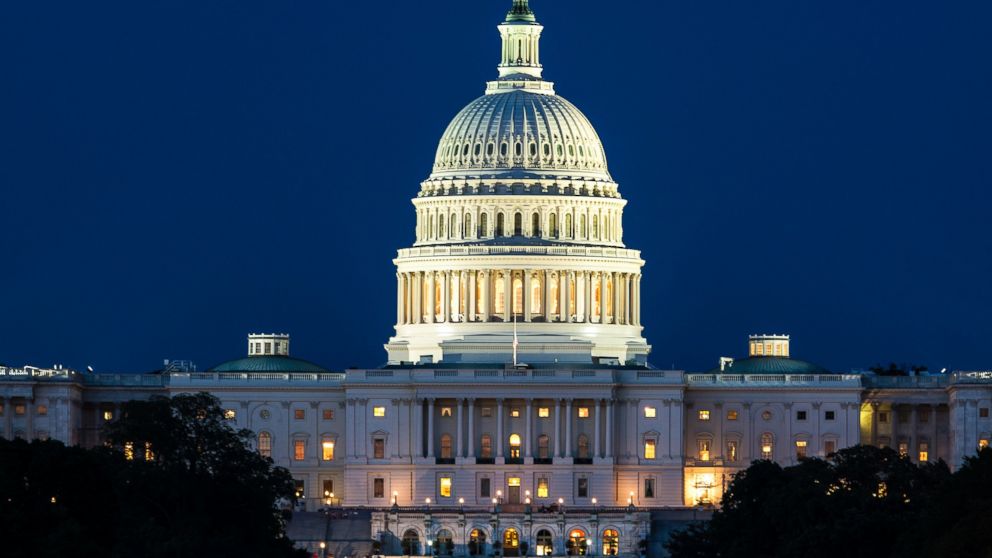
James Angleton set the strategy in 1964. “Jim would prefer to wait out the Commission,” as one CIA memo about Warren Commission inquiries put it.[1] They are still doing that as well as running their propaganda campaign against anyone who questions the lone-nut theory, their “best truth” according to David Robarge.[2]
I recently published an article about the delay in releasing records under the 1992 JFK Records Collections Act. In that article I explained the CIA’s play to discredit those who question their lone-nut theory best truth and suggested that their historian, David Robarge, has told us what to look for in the documents that are still being withheld.[3] In that article I suggested we should look for information regarding covert operations against Cuba that would “circumstantially implicate CIA in conspiracy theories” – Mr. Robarge’s words.[4] While I doubt the existence of a “smoking gun,” the circumstantial evidence we might look for in the delayed files could show a correlation between Lee Harvey Oswald’s activities in New Orleans and Mexico City in the late summer and fall of 1963 and CIA covert operations that were occurring at that time.[5] I specifically suggest that we look to files on operations involving George Joannides, the Directorio Revolucionario Estudiantil (“DRE”) and David Phillips. These are files, or at least some of them, that are in the JFK records that were scheduled for release.
On October 26, 1992, the U.S. Congress passed S. 3006, with only one amendment and very little, if any, opposition. The Senate bill, introduced by Senator John Glenn of Ohio, was signed the same day by the President George H.W. Bush and became Public Law 102-526, (“JFK Records Act”). Among other things the JFK Records Act provided for the collection, preservation and eventual release of all records related to the 1963 assassination of President John F. Kennedy with minimal exceptions. It mandates, in clear and unambiguous language, “[e]ach assassination record shall be publicly disclosed in full, and available in the Collection no later than the date that is 25 years after the date of enactment of this Act.” The Act allows an exemption to this explicit mandatory requirement only if the President “certifies” that the release of each withheld document “is made necessary by an identifiable harm to” either 1) military defense; 2) intelligence operations; 3) law enforcement; or 4) the conduct of foreign relations and “the identifiable harm is of such gravity that it outweighs the public interest in disclosure.”[6]
NARA released some of the files that I have been waiting on yesterday, November 3, 2017. The Excel spreadsheet listing the released files include four files referenced to David Atlee Phillips and one file referenced to the DRE.[7] Of the files referencing Phillips, three are of an unspecified nature and one is listed as his Office of Personnel (OP) file. The DRE file is listed as “CIA file on DRE AMSPELL operations.”
AMSPELL is a CIA cryptonym for DRE, the anti-Castro Cuban group that was run by George Joannides in 1963, that had the encounter with Oswald in New Orleans in 1963,and published the first conspiracy theory blaming Castro in their CIA financed newspaper in Miami on November 24, 1963. The file released yesterday, for such an active group, is a very thin 87 pages of which 61 are expurgated in full. Of the remaining 26 pages, many are largely expurgated. The Phillips files are even worse. The three files of unspecified type may be some of his operational files. These files are even more highly expurgated than the AMSPELL file.
Taking the 73 page long file RIF 104-10177-10135 as an example:
3 pages are a confidential notice that the file has been processed and retired which notice is reprinted in full;
3 pages are the file’s routing sheet that has been partially released with redaction of any significant information;
2 pages are a 1975 FOIA request from The Bay City Times, a newspaper in Bay City, Michigan, reproduced in full;
1 page is a Document Transfer and Cross Reference” form indicating that records of a project apparently named “Furioso C” have been removed from this file and sent to another section of the CIA with a redaction that not only removes the substantive entry but also the name of the space on the form where the entry was made;
2 pages are partially redacted memoranda;
3 pages are Security information forms for Project Furioso C with all substantive information redacted; 2 pages are a Project Financial Data form from 1952 with no substantive information that is not redacted;
6 pages are partially redacted routing sheets for documents, none of which have the routed document attached;
1 page is a partially redacted cable from 1952;
2 pages are copies, unredacted of logs of HSCA access to the file, showing that I saw the file in 1978.
The remaining 48 pages are redacted in full.
The file that is listed as David Atlee Phillips’s OP file is not as heavily redacted as the other three Phillips files although many of the documents, mainly personnel forms, it contains have been cleansed of any significant data. That, however, is not the end of the story on this file. The file starts with a few items of post-retirement correspondence to between him and the CIA in 1975 and then proceeds chronologically backwards from his retirement in 1975. I have not yet been able to go through the 358 page file to carefully study all the documents, but I have gone through it well enough to note that all his fitness reports between 1956 and 1965 are missing – not redacted, just simply not there. Indeed, so far as I have been able to find, there is no record whatsoever of a document in the file dated between 1961 and 1965 – not redacted, just simply not there.
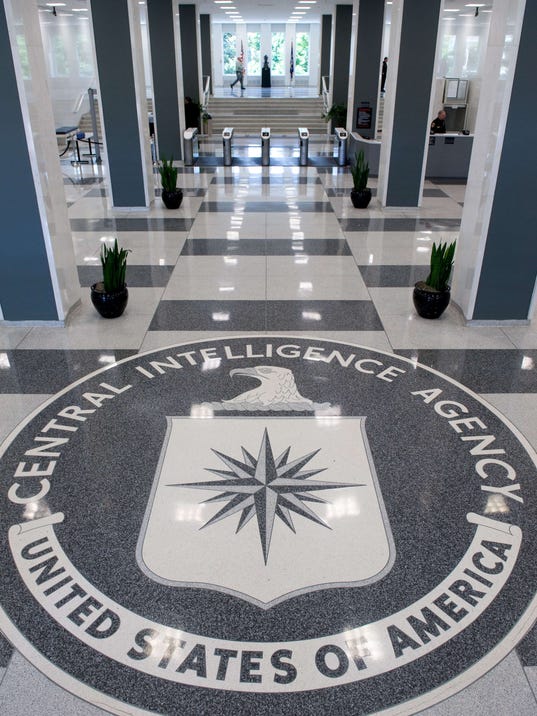
This release not only demonstrates that the Angleton strategy is still being applied. It also illustrates the point I have been making about what they are covering up. There may well be nothing we can do about it. It appears our lawmakers are spineless in the face of the intelligence community. Joseph Burkholder Smith, a retired CIA officer, told me and Gaeton Fonzi in 1978, “You represent Congress. What the f*** is that to the CIA? You’ll be gone in two years and the CIA will still be there.” To paraphrase that to fit the situation in which we now find ourselves: “You are the people that Congress supposedly represents. What’s that to the CIA? You’ll forget about it in a few weeks or so.”
But I won’t. I wrote a letter to my Senator yesterday before I saw the travesty that was the day’s release of JFK documents by NARA. Probably a futile gesture, but one I had to take anyway. Here’s what I told him:
“Please allow me first to introduce myself a bit. While I am your constituent, I do not believe we have ever met. I was born and raised in Webster County, West Virginia, and still reside on the farm my grandfather purchased in the 1940’s outside of Cowen. I am a graduate of WVU – 1976 – and while there got to know some of the members of your family. I had the privilege of running your first cousin Tim Manchin’s campaign for a seat on the WVU student government Board in the mid-70’s. I am a 1980 graduate of Cornell Law School and a former law clerk for Justice Tom McHugh of the West Virginia Supreme Court. I took a year and a half leave of absence from law school to work as a researcher for the U.S. House of Representatives Select Committee on Assassinations in 1977-1978. My primary area of responsibility in the Committee’s work was to investigate the Central Intelligence Agency and Lee Harvey Oswald in Mexico City. Most of the work I produced for the Committee remains classified. I am presently registered to vote in Webster County with an Independent affiliation.
I am aware that the Republicans in this state are trying to mount a serious challenge to you in the upcoming election and I am presently considering whether to become involved in the campaign and, if I do, who I am going to support. In that regard, and in view of your position on the Senate Select Committee on Intelligence, your position on an issue that is very important to me will influence whether I decide to actively support you in the upcoming election. That issue is the release – or I should say, the failure to release – the records currently held in the JFK Records Collection by the National Archives and Records Administration. While the records, and access to them, is of great interest to me, the real issues raised by the failure to release them are much more fundamental than just access to the assassination records. It is these fundamental issues that I want to explain and upon which I wish to hear your opinion.
On October 26, 1992, the U.S. Congress passed S. 3006, with only one amendment and very little, if any, opposition. The Senate bill introduced by Senator John Glenn of Ohio was signed the same day by the President George H.W. Bush and became Public Law 102-526 which is codified at 44 U.S.C. § 2107 note (“JFK Records Act”). Among other things the JFK Records Act provided for the collection, preservation and eventual release of all records related to the 1963 assassination of President John F. Kennedy with minimal exceptions. Among its other provision, the JFK Records Act, at § 5(g)(2)(D), mandates in clear and unambiguous language “[e]ach assassination record shall be publicly disclosed in full, and available in the Collection no later than the date that is 25 years after the date of enactment of this Act.” The Act allows an exemption to this explicit mandatory requirement only if the President “certifies” that the release of each withheld document “is made necessary by an identifiable harm to” either 1) military defense; 2) intelligence operations; 3) law enforcement; or 4) the conduct of foreign relations and “the identifiable harm is of such gravity that it outweighs the public interest in disclosure.” [Emphasis added.]
I note that this is a law duly enacted and adopted by the democratic processes of this country in 1992 – a country where we supposedly pride ourselves on being a nation of laws, a nation where the law applies to each and to all regardless of status or position. On October 26, 2017, as I am sure you are aware, President Donald Trump, at the request of the Central Intelligence Agency and other intelligence community members, disregarded the clear provisions of the law and postponed release of ninety percent of the remaining withheld documents in the JFK Records Collection for an additional six months. In doing this, the President made no findings, issued no orders and certified nothing, merely issuing a statement through the press office saying that all documents will be released “with redactions only in the rarest of circumstances” by April 26, 2018.
The President’s action was not only without authority in law, it was also taken in patent violation of the clear, unambiguous and mandatory terms of a law that your institution passed. In this situation, I would be tempted to file a suit against the President if it were not for the facts that: 1) the Courts have already held that the JFK Records Act does not provide a basis for any private cause of action for U.S. citizens, Assassination Archives and Research Center v. Dep’t. of Justice, 43 F.3d 1542, 1544 (D.C. Cir. 1995); 2) Federal Court litigation is too expensive to allow access to a normal citizen trying to hold his government accountable; and 3) it would take more than six months to get a case through to a decision in Federal Court so the action would represent no type of check or correction to the problem.
The real problem that this presents is that it is showing to the nation that the intelligence agencies of our nation are not subject to the laws of the nation. They are effectively above the law. At their request, or pressure, the President of the United States will violate the clear mandates of enacted legislation. And, to date, the reaction of our elected representatives in Congress seems to reinforce the fact that no one is willing to stand up to such blatant disregard of the clear provisions of the duly enacted laws of the nation. I understand that it is the executive branch that is charged with the enforcement of the laws your branch enacts and, in this case, it is the executive branch that is violating the law so there can be little realistic expectation of enforcement from them. But this is the heart of the problem and why it is incumbent upon the Congress to act. At a minimum, there should be oversight hearings. At a minimum, the Congress should not be seen to willingly acquiesce in executive contempt for the Legislative branch of government and the law of the land.
This action on the part of the intelligence community, the National Archives, and the Executive is only the latest in a long string of actions that disregard the provisions of the JFK Records Act that also subvert and cover up the information related to the assassination of our 35th president. Those other actions are beyond the present scope of this letter, but are things about which I would be glad to speak with you if you have any interest, so I will not go into them here.
To my knowledge there has been no coverage or explanation of why the intelligence community has requested this delay of the President. It was made in secret. What reason have they given for the delay? What kind of pressure have they brought to bear? How can they force a president to so blatantly disregard the law? If they can do this in regard to disclosure of fifty-year-old records, in what else can they exercise a like secret influence that corrupts the laws of the nation? What affect does the existence and use of such secret power have on our democracy? If these things – not just the documents but the method of influence – remain always secret, then how can a citizenry be sufficiently informed so as to exercise their franchise to any real purpose? How can we have faith in our democracy, let alone our government, if this kind of practice is allowed to continue unchallenged? These are the questions that I would like to have answered. But, to make it easier for you, I note you are in a unique position in regard to these issues due to your membership on the Senate Select Committee on Intelligence. Are you at least going to call and press for public hearings on any of these issues? Or are you going to join the vast majority of our representatives and once again cower before the intelligence agencies? Will you stand up for your constituents’ right to participate in their government on an informed basis? Will you stand for holding our government to a standard of open honesty before its citizens and against allowing the real affairs of state to be conducted in secret and in disregard of the laws enacted by the peoples’ representatives?
I anxiously await your answer.”
The questions I asked Joe Manchin in that letter are even more pressing today. I don’t know if he’ll even answer, let alone do anything. Maybe like Chuck Grassley, he’ll send out an apparently frustrated tweet. Or maybe, like the main stream press, he’ll tout the release of the documents, hoping no one will look to see what a travesty the “release” is because of the massive redactions. At this point all I can do is try to tell the truth about this whole state of affairs. I also encourage you to not take this insult to your intelligence and ability to govern yourselves without reaction. Do something. If nothing else, circulate this article to everyone you know. Refuse to accept the cancer of secrecy that destroys our liberty and ability to govern ourselves. Get involved. Get informed. Stay informed. Read and follow http://2017jfk.org/home/ and http://jfkfacts.org/. Join the AARC at https://aarclibrary.org/aarc-membership/. Join CAPA at http://capa-us.org/membership/. If those who exercise the power in this country have such blatant contempt for the law, then the time for serious peaceful civil disobedience may be upon us. Get the word out. Don’t be silent any longer. This is not an issue of the left or the right. Do something. Say something. And don’t stop until you are heard.
*********************
[1]. Raymond Rocca to Richard Helms, Memo Re Response to Rankin, 5 Mar 1964, NARA Record No. 1993.06.24.14:59:13:840170, available at https://www.maryferrell.org/showDoc.html?docId=98075#relPageId=1&tab=page
[2]. David Robarge, “DCI John McCone and the Assassination of President John F. Kennedy,” Studies in Intelligence, (Vol. 57, No. 3, 09/2013), Approved for Release and declassified, 09/29/2014, at page 20. Available at http://nsarchive.gwu.edu/NSAEBB/NSAEBB493/docs/intell_ebb_026.PDF. Robarge wrote: “The DCI was complicit in keeping incendiary and diversionary issues off the commission’s agenda and focusing it on what the Agency believed at the time was the ‘best truth’: that Lee Harvey Oswald, for as yet undetermined motives, had acted alone in killing John Kennedy.” For my commentary on the CIA’s “best truth”, see Thank You, Phil Shenon available at https://realhillbillyviews.blogspot.com/2015/10/. Note that the “best truth” was conditioned by “at the time” leaving open the real possibility that alternative cover stories may have to be brought to play in the event that time undermined what the Agency considered to be the best truth for them.
[3]. Dan Hardway, What Were They Hiding and What Should We Look For, 30 Oct 2017, available at https://realhillbillyviews.blogspot.com/2017/10/what-were-they-hiding-and-what-should_30.html
[4]. Robarge, n. 2 above, at p. 9.
[5]. This is addressed in more detail at JFKFacts, Exclusive: JFK investigator on how CIA stonewalled Congress, http://jfkfacts.org/hardway–declaration–cia–stonewalled–jfkinvestigation/; Declaration of Dan L. Hardway, Morley v. CIA, CA # 03-02545-RJL, D.C.D.C. 11 May 2016, Docket No. 156.
[6]. 44 U.S.C. § 2107 note § 5(g)(2)(D). Emphasis added.
[7]. https://www.archives.gov/research/jfk/2017-release, RIF Nos. 104-10176-10121, 104-10177-10135, 104-10177-10134, 104-10194-10026, and 104-10170-10121.
The JFK Case: The Twelve Who Built the Oswald Legend
by Bill Simpich © February 11, 2018
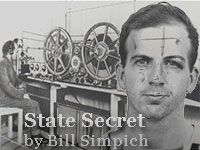 Between August 2010 and January 2015 Bill Simpich produced 12 articles on the JFK case which became the backstory to his invaluable work, STATE SECRET: WIRETAPPING IN MEXICO CITY, DOUBLE AGENTS, AND THE FRAMING OF LEE OSWALD. Following are all twelve of his original chapters. An upcoming epilogue will be published this year.
Between August 2010 and January 2015 Bill Simpich produced 12 articles on the JFK case which became the backstory to his invaluable work, STATE SECRET: WIRETAPPING IN MEXICO CITY, DOUBLE AGENTS, AND THE FRAMING OF LEE OSWALD. Following are all twelve of his original chapters. An upcoming epilogue will be published this year.
THE JFK CASE: THE TWELVE WHO BUILT THE OSWALD LEGEND
Bobby Kennedy and the Promise of Rebirth
“The key question is to pass beyond the facts of CIA’s operations to the reasons they were established – which inexorably will lead to economic questions:
Preservation of property relations and other institutions on which rest the interests of our own wealthy and privileged minority.
These, not the CIA, are the critical issue.“
— Phillip Agee, CIA Officer
 t was 1968.
t was 1968.
Bobby Kennedy was running for President.
He offered the opportunity to redeem the terrible slaying of his brother.
Bobby blamed himself for Jack’s death. If it hadn’t have been for the machinations around Cuba, Jack might have still been President.
Bobby was in the middle of those machinations. He had been giving advice to the CIA on how to do its job in Latin America and elsewhere. Many Agency officers did not appreciate his efforts, and said so.
He had his own ideas on how to overthrow Castro – while ordering the Agency to stop working with the Mafia to assassinate the Cuban leader.
He had his own ruthless side. Historian Evan Thomas has described how Bobby considered manufacturing an incident to justify an American invasion in the midst of the Cuban missile crisis.
He also supported his brother when Jack changed tactics and tried to reach rapproachement with Fidel in the summer and autumn of 1963.
In the days after Jack’s death, both Bobby and Jackie Kennedy reached out to the Russians and told them that they believed that JFK had been killed due to a domestic operation.
LBJ didn’t want any part of Cuba after what happened to JFK. He turned to Vietnam.
The escalation of civil rights struggles in the midst of a war economy resulted in a social explosion. LBJ was forced to step down. Bobby found himself being forced to step up.
The question of “who had what” and “who had how much” was on the table.
The Black Panthers were seen doing security at his big city rallies.
He traveled to the Mississippi Delta to learn more about poverty.
Cesar Chavez and Bobby stood together in the Central Valley fields.
Working-class white people embraced RFK as one of their own. He was Irish. His father was a bootlegger.
Religious leaders welcomed him. He was a devout Catholic, fiercely ecumenical.
He was determined to bring an end to the Vietnam War.
In a divisive time, a terrible time, he offered the possibility of healing.
Professor Peter Dale Scott speaks with Alan Dale about Robert Ronstadt, Industrial Security, and LHO
“…there are different ways of thinking of Oswald as an asset.”
A timely reminder from our ultimate scholar: Following is a 5 minute audio excerpt from Alan Dale’s telephone conversation with Professor Scott recorded December 2017:
Abolish the FBI
How much more do we need to learn about 2016 to realize the agency is a disaster?
By Holman W. Jenkins, Jr. | Sept. 21, 2021 6:30 pm ET
In ignoring the latest John Durham indictment, most of the media and official Washington are ignoring the elephant between its lines: the Federal Bureau of Investigation.
Mr. Durham, the special counsel appointed to investigate the government’s handling of the Russia collusion mess, levels a single criminal charge against Michael Sussmann, then a lawyer for the Democrat-linked firm Perkins Coie. In delivering to the FBI fanciful evidence of Trump-Russia collusion a few weeks before the 2016 election, Mr. Sussmann is alleged to have lied to the FBI’s chief lawyer, James Baker, claiming he was acting on his own behalf and not as a paid agent of the Clinton campaign.
Already you might be rolling your eyes. Mr. Durham provides ample reason in his own indictment for why the FBI would have known exactly whom Mr. Sussmann was working for. If Mr. Sussmann didn’t lie at the time, Mr. Baker may have lied since about what transpired between him and Mr. Sussmann. Either way, we are free to suspect the FBI would have found it useful to be protected from inconvenient knowledge about the Clinton campaign’s role. The same FBI then was busy ignoring the political antecedents of the Steele dossier, also financed by Mr. Sussmann’s law firm on behalf of the Clinton campaign, information that the FBI would shortly withhold from a surveillance court in pursuit of a warrant to spy on Trump pilot fish Carter Page.
Mr. Durham, in describing the Sept. 19, 2016, meeting with Mr. Baker, suggests that a properly informed FBI might have thought twice before opening an investigation into Mr. Sussmann’s phony story about the Trump Organization and Russia’s Alfa Bank. This is a way also of saying the FBI might have found it harder to proceed without the political deniability that Mr. Sussmann’s alleged statement provided.
At this late date, none of this can be consumed without recognizing that the FBI was already hip-deep in the 2016 election. It began a few weeks earlier with Director James Comey’s insubordinate, improper (according to the Justice Department’s own inspector general) intervention in the Hillary email case. We learned much later that Mr. Comey justified this unprecedented action by referring to secret Russian “intelligence” that his FBI colleagues considered a red herring and possible Russian disinformation. Your eyes should really be rolling now.
NEWEST EVIDENCE CONFIRMS AND CORROBORATES THE JFK ACOUSTICS … AGAIN
When President Kennedy was shot to death on the streets of Dallas, a motorcycle in the police escort had its radio microphone open and captured the sounds of the assassination gunfire over the police recording system. For his recent book, Last Second in Dallas, author Josiah Thompson arranged for a sound-processing expert named Richard Mullen to provide measurements on a set of audio artifacts that occur at places on the same Dallas Police recording. The results are counter to the misrepresentations about the artifacts used by the National Research Council as a pretext to declare the acoustical analysis invalid. The results likewise discredits the study by Sonalysts, the firm engaged by Larry Sabato for his otherwise inconsequential book on John F. Kennedy. The NRC panel and Sonalysts exploited these artifacts in a cynical effort to obfuscate the scientific evidence of a gunshot from the grassy knoll. What the new measurements tell us about the artifacts is explained herein. Clarification: the NRC panel claimed that the acoustical evidence was invalid on the grounds that the putative “gunshots” were not synchronous with the time of the assassination. The claim was spurious as it was contrary to the evidence then available. The new evidence contradicts the NRC claim and corroborates the acoustics. Similarly, Sonalysts asserted falsely that the motorcycle with the open microphone was not in Dealey Plaza (Fig. 1) at the time of the assassination, an assertion that was contrary to the evidence then available. The new evidence further contradicts Sonalysts claims and adds another layer of corroboration to the acoustical identification of gunfire.
* * * *
AARC Board Member
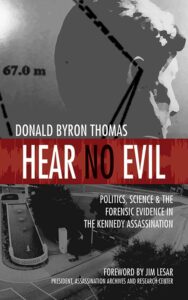 Donald B. Thomas received his Ph.D from the College of Agriculture at the University of Missouri. Following graduation, he held post-doctoral research appointments at the University of Arizona and the University of Nebraska. He is currently a senior scientist with the United States federal government and is on the graduate faculty at the University of Texas. He is a former President of the Coleopterists Society and presently serves as a subject editor for the Annals of the Entomological Society of America.
Donald B. Thomas received his Ph.D from the College of Agriculture at the University of Missouri. Following graduation, he held post-doctoral research appointments at the University of Arizona and the University of Nebraska. He is currently a senior scientist with the United States federal government and is on the graduate faculty at the University of Texas. He is a former President of the Coleopterists Society and presently serves as a subject editor for the Annals of the Entomological Society of America.
Dr. Thomas is the author or co-author of more than one hundred scientific journal articles, book chapters and books. His 2001 article in the journal Science & Justice, The Acoustical Evidence in the Kennedy Assassination Revisited led to publication of Hear no Evil, a book which places the acoustical evidence in a larger context. He currently resides in Texas with his family.
Summary Update RE: Dag Hammarskjöld by Dr. Don Thomas
Dag Hammarskjold was the Secretary General of the United Nations from 1953 to 1961. He was awarded the Nobel Peace Prize posthumously for his work in Africa. He earned his doctorate in Economics from the University of Uppsala in Sweden, his native country. To my mind his greatest accomplishment was his role in the design and implementation of the welfare state in Sweden, a model that was followed by the neighboring Nordic countries. Which is why, in terms of standard of living, the Nordic countries have by consensus of academic economists, the best functioning economies in the world. but that’s a subject for a different blog. John F. Kennedy said of him,
“I realize now that in comparison to him, I am a small man. He was the greatest statesman of our century.”
He was also a poet, and in a couplet written as a young man he presaged his death saying,
Tomorrow we shall meet, Death and I -.
And he shall thrust his sword into one who is wide awake.
I am well aware that the world right now is preoccupied with crises arguably more serious than matters of history. But I have just returned from a conference held at the Wecht Institute of Forensic Science on the campus of Duquesne University in Pittsburgh. The sponsor of the symposium was a group of which I am proudly a member, Citizens Against Political Assassinations. A cadre of subversives to be sure, nonetheless, we were welcomed by the Governor of Pennsylvania Josh Shapiro (by telecast); our keynote address was delivered by Professor Barbara Perry, presidential historian with the University of Virginia; our reception speaker was actor and activist, Alec Baldwin.
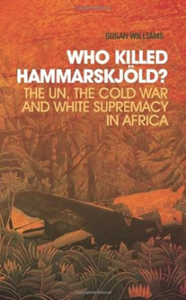 It was at the conference that I learned of the work of UK researcher, Dr. Susan Williams. She is the author of this new book. Available from Amazon, the jacket cover says the following.
It was at the conference that I learned of the work of UK researcher, Dr. Susan Williams. She is the author of this new book. Available from Amazon, the jacket cover says the following.
“One of the outstanding mysteries of the twentieth century, and one with huge political resonance, is the death of Dag Hammarskjold and his UN team in a plane crash in central Africa in 1961. Just minutes after midnight, his aircraft plunged into thick forest in the British colony of Northern Rhodesia (Zambia), abruptly ending his mission to bring peace to the Congo. Across the world, many suspected sabotage, accusing the multi-nationals and the governments of Britain, Belgium, the USA and South Africa of involvement in the disaster. These suspicions have never gone away. British High Commissioner Lord Alport was waiting at the airport when the aircraft crashed nearby. He bizarrely insisted to the airport management that Hammarskjold had flown elsewhere – even though his aircraft was reported overhead. This postponed a search for so long that the wreckage of the plane was not found for fifteen hours. White mercenaries were at the airport that night too, including the South African pilot Jerry Puren, whose bombing of Congolese villages led, in his own words, to ‘flaming huts …destruction and death’.
These soldiers of fortune were backed by Sir Roy Welensky, Prime Minister of the Rhodesian Federation, who was ready to stop at nothing to maintain white rule and thought the United Nations was synonymous with the Nazis. The Rhodesian government conducted an official inquiry, which blamed pilot error. But as this book will show, it was a massive cover-up that suppressed and dismissed a mass of crucial evidence, especially that of African eye-witnesses. A subsequent UN inquiry was unable to rule out foul play – but had no access to the evidence to show how and why. Now, for the first time, this story can be told. Who Killed Hammarskjold follows the author on her intriguing and often frightening journey of research to Zambia, South Africa, the USA, Sweden, Norway, Britain, France and Belgium, where she unearthed a mass of new and hitherto secret documentary and photographic evidence. At the heart of this book is Hammarskjold himself – a courageous and complex idealist, who sought to shield the newly-independent nations of the world from the predatory instincts of the Great Powers. It reveals that the conflict in the Congo was driven not so much by internal divisions, as by the Cold War and by the West’s determination to keep real power from the hands of the post-colonial governments of Africa. It shows, too, that the British settlers of Rhodesia would maintain white minority rule at all costs.”
By way of background, in 1960 the former Belgian Congo became the Republic of the Congo with Patrice Lumumba as its elected Prime Minister. But within months there was a revolt from within the military and a political puppet named Moise Tshombe established a base in the southern-most province Katanga. In short order the new nation devolved into chaos with looting and atrocities directed at the remaining Belgians and other Europeans. In response Belgium sent in military forces to protect their citizens, but instead of supporting the legitimate government they joined up with the rebel Katangans.
Researchers such as Williams believe that it was Belgian mining interests, specifically the conglomerate Union Miniere, that figured they could maintain the mineral rights for the especially rich Uranium deposits in Katanga with the amenable Tshombe regime as opposed to having to share the profits with the Congolese people. Most of the Belgians living in the Congo were employees of the Union’s Uranium mines. Some twenty years after the fact, the government of Belgium officially apologized for its role in the “Crisis of the Congo” as it came to be known.
To counterweight the balance of power, and as Secretary General, Hammarskjold ordered in 20,000 UN troops to support the legitimate government. Hammarsjkold undertook this action against heavy pressure from the western countries, including the USA, the UK, France, the Soviet Union, and of course Belgium. The UN effort failed. A squad of CIA funded mercenaries led by Joseph Mobutu, captured Lumumba and turned him over to Tshombe for execution. When an Irish batallion among the UN force was surrounded in September 1961 Hammarsjkold flew to Katanga to negotiate a ceasefire. It was on the return trip that his plane, a DC-6 crashed killing all aboard.
It was shortly after midnight that the plane attempted a refueling stop at the city of Ndola, Northern Rhodesia (now Zambia). On the approach, lower than it should have been, the plane struck the treetops on the hills south of the town, bursting into flames on impact.
Although the official investigation by the Rhodesian government concluded that the cause was pilot error, it was marred by limitations inherent to the colonial legal system. Under Apartheid, witness statements by black Africans are given no legal weight. An ad hoc investigation by a UN aid worker named Goran Bjorkdahl in 2007 turned up ten eyewitnesses who claimed that the DC-6 was attacked by a smaller plane and that it was on fire before it crashed.
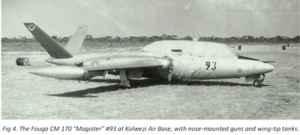 On that basis the UN undertook its own investigation in 2013, contracting with a Swedish crash expert Sven Hammersberg. Hammersberg specifically investigated the likelihood of a fighter plane attack. The only fighter planes that were in range were back in Katanga. The Belgians had provided the Katangans with a couple of flimsy, limited fire power jets called Fougas. They had a single machine gun mounted in the nose. Although Hammersberg could not rule out the possibility absolutely, as a former fighter pilot himself he considered the plot non-credible. First of all the distance would have been at the very limit of the Fougas fuel range, even if it had the supplementary wingtip fuel tanks mounted. The pilot would have been daring if not foolhardy to the point of suicidal. Secondly, the Fougas did not have radar, making contact with and targeting the DC-6 at night, not to mention landing and taking off in the dark, a formidable task. In interviewing the mercenary pilots they assured him that the Fougas were strictly used for daytime operations; they had never flown at night. Then there was the limited firepower, along with a lack of bullet holes in the wreckage.
On that basis the UN undertook its own investigation in 2013, contracting with a Swedish crash expert Sven Hammersberg. Hammersberg specifically investigated the likelihood of a fighter plane attack. The only fighter planes that were in range were back in Katanga. The Belgians had provided the Katangans with a couple of flimsy, limited fire power jets called Fougas. They had a single machine gun mounted in the nose. Although Hammersberg could not rule out the possibility absolutely, as a former fighter pilot himself he considered the plot non-credible. First of all the distance would have been at the very limit of the Fougas fuel range, even if it had the supplementary wingtip fuel tanks mounted. The pilot would have been daring if not foolhardy to the point of suicidal. Secondly, the Fougas did not have radar, making contact with and targeting the DC-6 at night, not to mention landing and taking off in the dark, a formidable task. In interviewing the mercenary pilots they assured him that the Fougas were strictly used for daytime operations; they had never flown at night. Then there was the limited firepower, along with a lack of bullet holes in the wreckage.
Nonetheless one of the mercenary pilots would subsequently claim to Swedish journalists that one of his colleagues, pilot Jan van Risseghem, had admitted to confidants that he had, on orders, shot down the UN plane. On further investigation Van Rissighem’s alibi in which he had told investigators that he was in South Africa on the night in question began to fall apart.
If so, who gave the orders? Was it the Belgians and the Union Miniere? Internal CIA cables indicate the US suspected the KGB of involvement. They too were interested in the yellow cake. But that could be a misdirection. In 2021 a French journalist Maurin Picard discovered a document in the files of the OAS, the Organisation Armeé Secrete; it was a death warrant for Hammarsjkold. The OAS was a cabal of generals within the French Foreign Legion during the early 1960’s. Their goal was to prevent French colonies, which they had fought to retain, from being freed. Their reign of terror ended when they were caught in the unsuccessful attempt to assassinate Charles DeGaulle in 1962. DeGaulle had supported the independence of Algeria. In fact, French mercenaries were among those training the Katangans. The document condemning Hammarsjkold translates as,
“It is high time to put an end to his harmful intrusion … this sentence common to justice and fairness to be carried out, as soon as possible.”
The CIA was working closely with the OAS in the sixties carrying out its own program of assassinations as revealed first by the 1977 Church Committee and more recently in the Wikileak documents.
Hollywood has caught up with the suspense with a dramatized version of the matter (produced in Sweden actually) released over christmas 2023 (link to clip here).
https://www.youtube.com/watch?v=wJddgX6ICvo
And that brings us up to the latest with Dr. Williams. She is the 2023 recipient of the Wyndham-Campbell prize for non-fiction literature awarded by Yale University. With it comes a stipend of $175,000 to continue her research. Which, by the way, she is conducting under the auspices of the United Nations which has an open investigation led by Judge Chande Othmann.
Naturally both the USA and UK have declined to cooperate. Which is why we, the Assassination Archives and Research Center, the largest repository of documents on such matters, have made our resources available (link here).
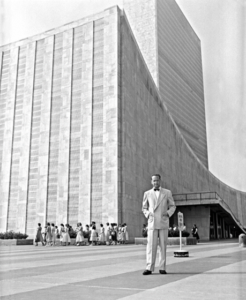 A fitting epitaph from another poem he wrote.
A fitting epitaph from another poem he wrote.
“Do not seek death. Death will find you. But seek the road which makes death a fulfillment.”
On the 29th of February 2024 there will be an online conference on Dag Hammerskjold’s plane crash sponsored by the Institute for Commonwealth Studies. A guest speaker will be journalist Marin Picard whose new book is scheduled for release this June, 2024.
And as a last word, so as not to dwell entirely on his death but in celebration of his life, I think Dag would appreciate these kind mentions from a scene in the movie the Normal Heart, “I belong to a culture…”
https://www.youtube.com/watch?v=X-vIBq2lTn0
* * * * *
RELATED: 29 February 2024 Online Conference: Dag Hammarskjöld’s Plane Crash: The Continuing Search for Truth

